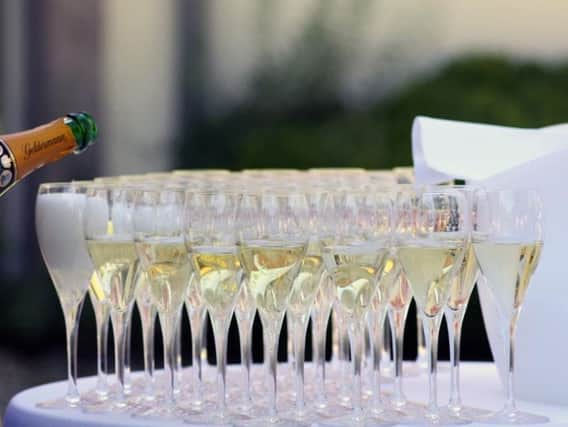Here is everything you need to know about the champagne flute


In the wine news recently there has been much debate as to the best glass for champagne (or indeed other sparkling wines).
The long-held wisdom is that the tall champagne flute is best for encouraging the bubbles to gather the wonderful aromas of the wine as they rise through the liquid.
Advertisement
Hide AdAdvertisement
Hide AdBut is this true? Possibly the most prestigious and sought after brand of wine glass is Riedel Cristal.
CEO Maximilian Riedel has stated that he wishes to see the champagne flute rendered ‘obsolete’, as he does not merit the shape best for champagne consumption.
Other wine experts, including many sparkling wine makers of repute, spurn the flute for white wine glasses.
It seems while the flute is great at showcasing the visual experience of the rising bubbles it may not, according to many of these experts, be the best way to experience the wonderful aromas of the wine.
Advertisement
Hide AdAdvertisement
Hide AdDecanter Magazine reported as long ago as 2016 that Philippe Jamesse, head sommelier at Les Crayères in Reims (heart of the Champagne region) was so fed up with the champagne flute he took his problem to a local glass manufacturer to design, in his view, the ideal champagne receptacle.
Here they created an elongated glass like the flute, but with a wider body which then
tapered toward the top in order capture those all-important aromas whilst the extra width means more bubbles are bursting at any one time under your nose as you taste.
But where did the flute come from anyway?
Way back in the 17th century, as champagne appeared on the market, the coupe was the favoured glass for champagne.
Advertisement
Hide AdAdvertisement
Hide AdIt seems the flute didn’t appear until the 18th century as a tall straight-sided glass.
By the 20th century this had evolved into the slightly tapered flute we know today, though 1920s prohibition champagne drinking continued to favour the coupe.
Others prefer the tulip glass. A rounded body tapering as it rises to capture aromas but flared at the top to give the attractive tulip shape. Once again, the wider surface area may well offer up more intense aroma and flavour.
So who is right?
The answer when referring to taste as ever will depend on the taster.
Advertisement
Hide AdAdvertisement
Hide AdMany people are sensitive to acidity and drinking champagne from a flute may well direct this highly acidic drink down the centre of the mouth away from the acidity receptors at the side of the mouth.
Others with less sensitivity may well need the all-important olfactory sensors to be fed as much bubble-burst vapour as possible.
So if you haven’t a matching collection of champagne flutes then don’t be embarrassed to serve your sparkling wine to friends in a wine glass, they may well think it tastes better.
You may even have some old coupe glasses stored away somewhere, time to put them back into service perhaps?